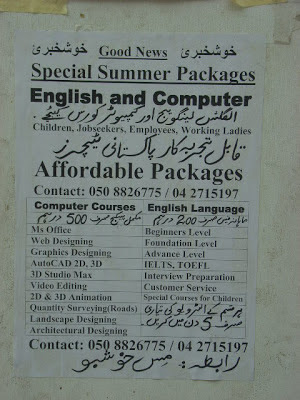Friday, November 30, 2012
Technical support
Last month I wrote about call centres. One of the jobs many call centre employees have is to provide technical support for people who can’t assemble or operate some product. In many cases they are providing English-language support for consumers who have bought products made in Asia. China now dominates the production of all kinds of electronic equipment and this has generated a huge demand for technical translators, with English the language most needed. But the English instructions that come with products are often baffling (“For safety reasons do not put the air-conditioning in the chicken”) as well as sometimes being entertaining (“Please to insert card in your mother’s board.”).
As a general rule, translation should be done from a foreign language into the translator’s own language, but the rapid pace of Chinese economic growth, and the lack of English-speakers learning Chinese (in comparison with Chinese learning English) means that mostof the English translation is done by Chinese, and some if it is not very good. Of course this is not just a Chinese problem. Not so long ago I was staying at a hotel in Nagoya and the instructions for using the TV were: It is able to be seeing of the program of the favorite by pushing ground D button and pushing the channel button in the TV operation part when switching from the room theater to the TV screen. This was clearly produced using translation software and somehow I worked it out. In fact I should add that I generally find both the English and the Japanese instructions for Japanese products much better than their British or American ones. I should also mention that my mother, who did not learn to use a computer until she was 70, found the advice she received from a call centre based in India extremely clear.
Of course translation software, such as Googletranslate, has improved greatly. But just like an old-fashioned dictionary, it has to be used carefully and intelligently, and is likely to lead to disastrous results if used by someone who doesn’t know the language they are attempting to translate at all. Asia’s achievements in both hardware and software production seem all the more impressive when we consider the language barriers that have had to be overcome. Much of the technology in use today was originally developed by scientists working in English.
The first modern computers (Iowa State University’s Atanasoff and the University of Pennsylvania’s ENIAC) were built in the United States. Briton Tim Berners-Lee has been credited with inventing the worldwide web. The first text message was sent in the UK. A lot of technology has also been developed by scientists who were not native English-speakers yet worked mainly in that language. Thus the generation of Asians that started to use personal computers in the 1980s or send text messages in the 1990s tended to do so in English. But now Asians lead the world in both software and hardware production.
Subscribe to:
Post Comments (Atom)



略語や文法通りの意味を持たない熟語はたくさんあって、しかもそれは次々生まれるし進化する。
ReplyDelete機械やソフトがどんなに進化しても(もうすでに現在それらは以前に比べて大変な進化を遂げているが)、それらを全てカバーして且つ進化に追いつくのはまず不可能に思える。
人手不足は簡単に賄える問題ではなく、正確な翻訳との妥協点を探っていくより他当分の間はないのではないか。また機械と人を分けるのではなく、併用していく道もあると考える。